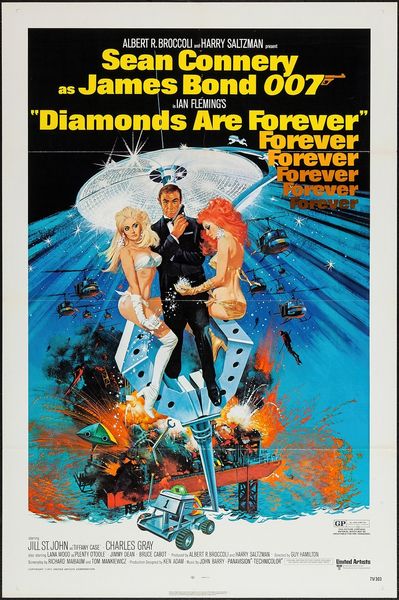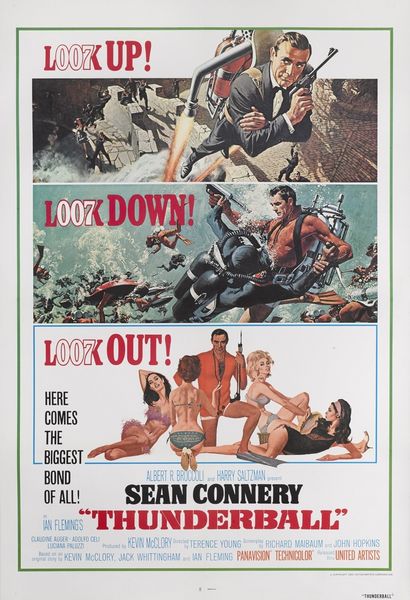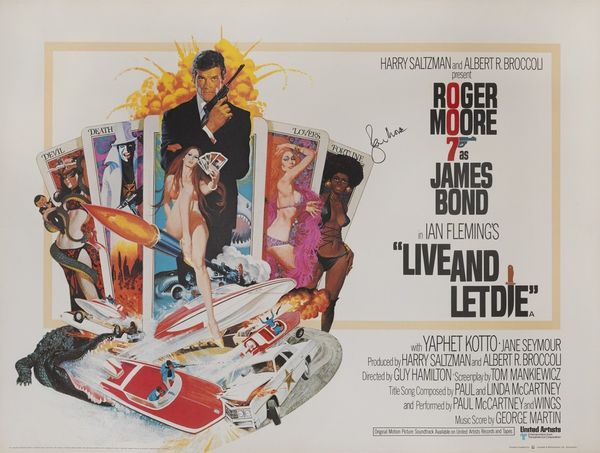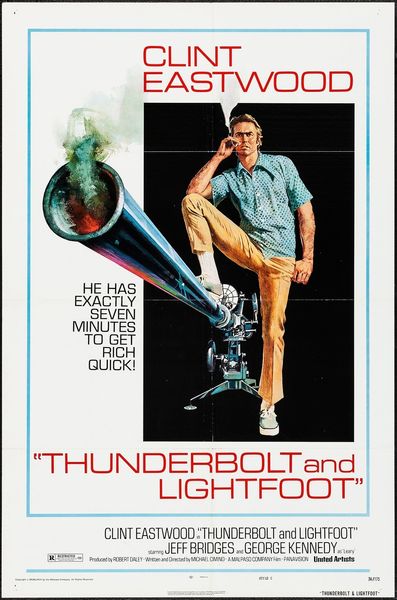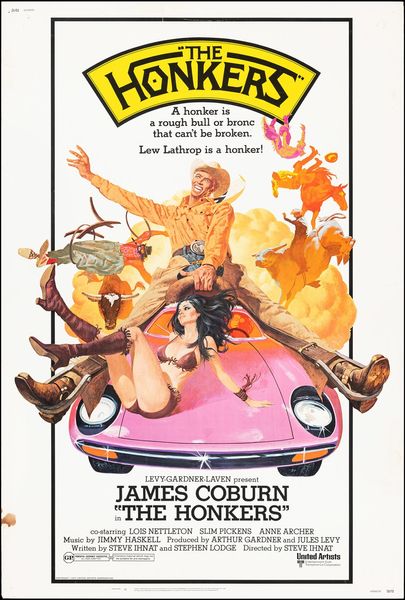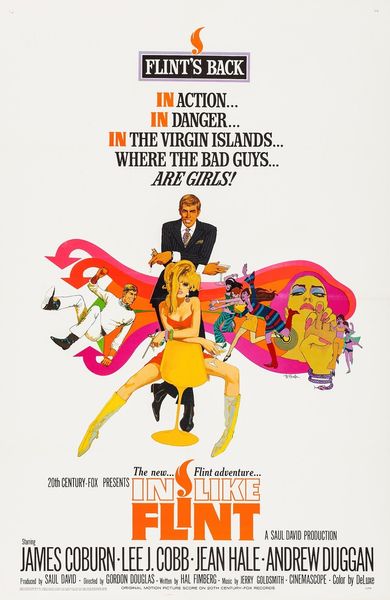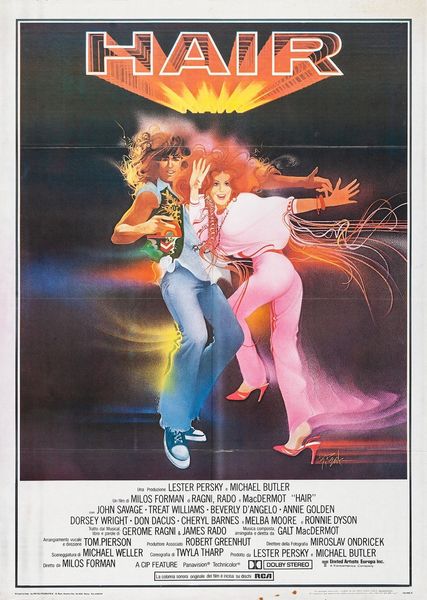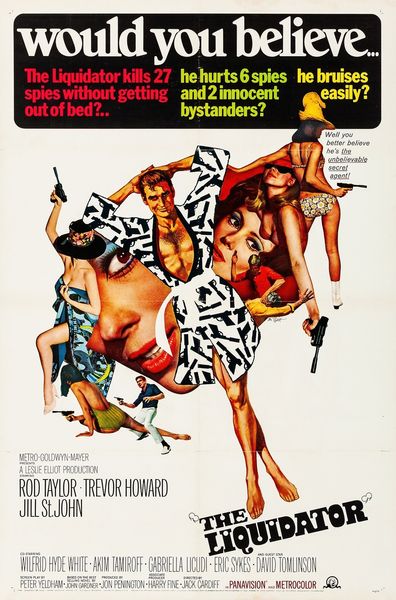
acrylic-paint, poster
#
landscape
#
acrylic-paint
#
figuration
#
poster
#
modernism
Copyright: Modern Artists: Artvee
Curator: "James Bond: Diamonds Are Forever," a 1971 poster by Robert McGinnis, created with acrylic paint, immediately suggests a specific era of action and design. The scene presented depicts James Bond amidst chaos, typical of movie advertising from the period. Considering its time and genre, what catches your eye in terms of how it's put together, produced, or distributed? Editor: Well, the first thing I notice is the materiality of the poster itself—the paper, the print quality. It feels almost intentionally cheap, despite the vibrant colors and the promise of a glamorous spy adventure. The medium seems directly linked to its mass appeal. Does this impact your reading of the work at all? Curator: Absolutely. Think about the mode of production. This wasn't some carefully crafted, limited edition print for the elite. It's mass-produced, designed for broad consumption, stuck up on bus stops and in cinema foyers. This deliberate choice in materials and mode signals accessibility, attracting a wide audience to theaters. How does the content interact with this intended broad appeal? Editor: It's definitely a complex interaction. You have these hyper-sexualized figures juxtaposed against a scene of destruction and technology. It's appealing, maybe even provocative, but in a way that feels very tied to the cultural moment. I mean, does the exploitation present in the poster serve only to advance the popularity of this medium? Curator: Precisely. We must address how the depiction of women here intersects with the economic strategies of selling the film. Are they purely aesthetic elements or do they play a deeper role within the system of production and consumption this poster is embedded within? What do you take from it? Editor: I never really considered posters as such a fundamental part of both popular culture *and* capitalist enterprise. Looking closely at the process and intention has highlighted something new for me. Curator: Exactly! Understanding how art functions as a commodity allows us to dig beneath the surface-level image, and analyze cultural values and societal power structures.
Comments
No comments
Be the first to comment and join the conversation on the ultimate creative platform.
